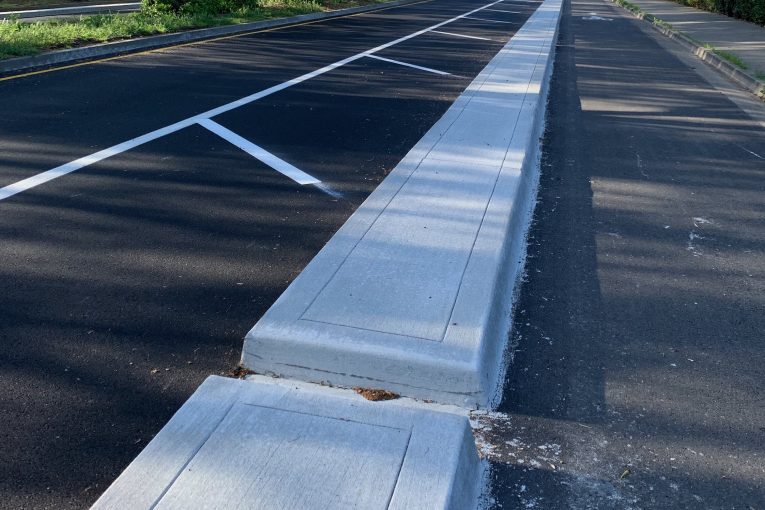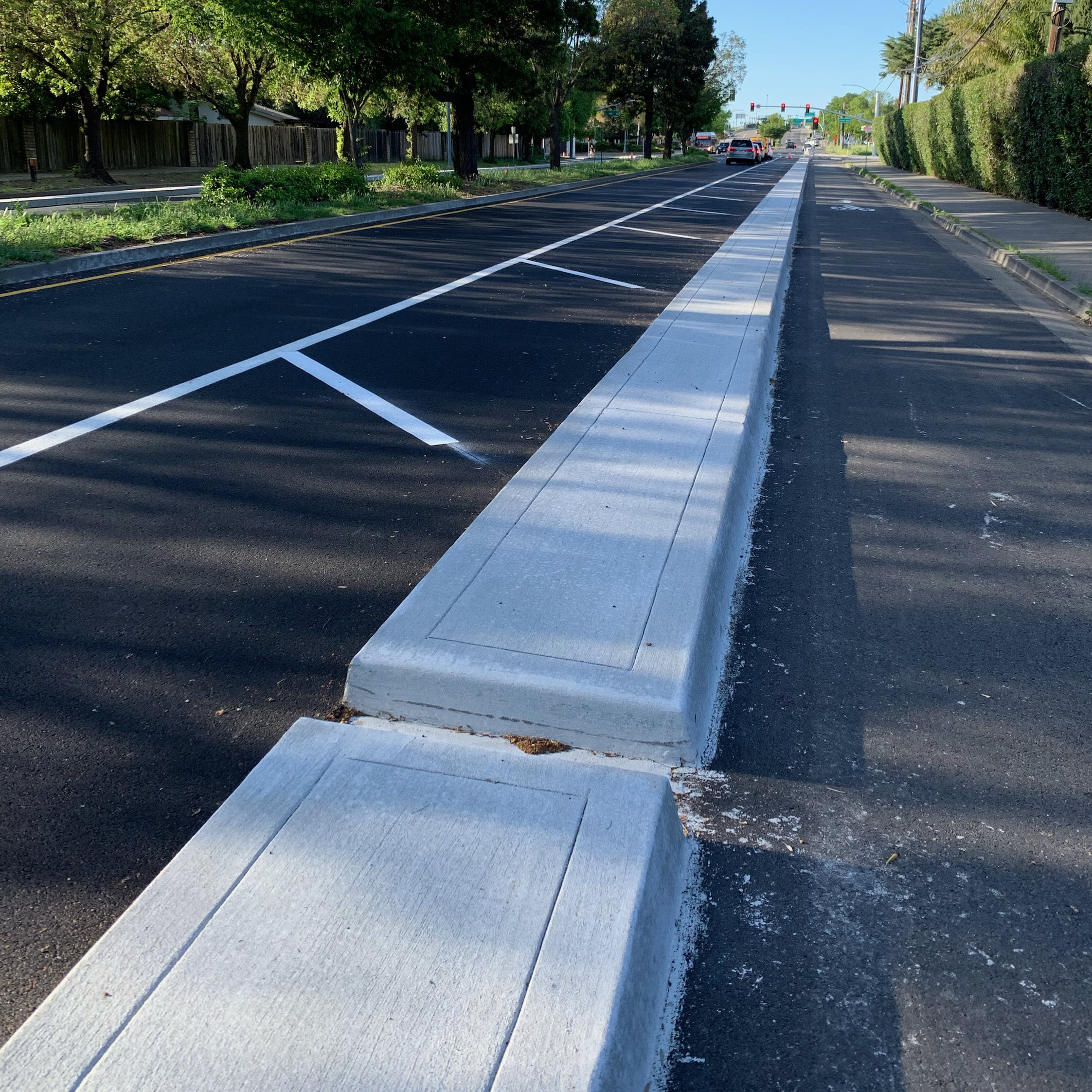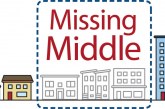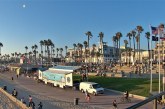

by Alan Pryor
The City is in the midst of trying to formulate a plan to alleviate traffic congestion along the Mace Blvd. corridor.
Following are excerpts from the Staff Report presented to the Bicycling, Transportation, and Street Safety Commission (BT&SSC) for their July 11, 2019 meeting which discusses the traffic congestion on Mace Blvd and the City’s proposed responses.
“Traffic Congestion:
Since the project design phase was completed in 2016 and prior to construction, traffic congestion steadily increased along the corridor during the evening peaks, particularly on Thursdays and Fridays. Several factors have converged which explain this condition:
- Traffic congestion on eastbound Interstate 80 backs up past the Downtown/Richards Blvd exit, sometimes west of State Route 113, resulting in motorists exiting at the Richards off-ramp, bypassing freeway congestion by traveling east on Chiles Road through Mace Blvd, which increases congestion at the Mace Blvd/Chiles Road intersection.
- The Mace Blvd on-ramps to eastbound Interstate 80 back up, increasing congestion.
- Mobile and in-car navigation applications re-route freeway traffic in Dixon at the Pedrick Road interchange around the congestion via eastbound Tremont Road and northbound Mace Blvd.”
Whether the fault lies solely in the increased traffic on I-80 or diversions through Davis or the City’s failure to anticipate and account for it is a moot point at this stage. Clearly, the next step must be to get an accurate handle on what traffic flow patterns are now and how they will change in the future. Unfortunately, there is nothing in the Staff Report that provides current estimates of daily and  peak traffic counts and how they will change in the future except to say that it will get worse.
peak traffic counts and how they will change in the future except to say that it will get worse.
“Traffic congestion on Interstate 80 continues to increase, as does the use of navigation applications diverting drivers around it. This technology has also affected Cowell Blvd, Covell Blvd, and Second Street corridors. Given navigation algorithms route drivers based on travel time, peak traffic congestion relief from capacity-increasing design revisions may not endure, long term. That is, routing more cars through the corridor may occur, resulting in similar congestion problems.
Therefore, adjustments to the Mace Blvd corridor should focus on accommodating local traffic demands and movements, while assisting with alleviating out of town “cut through” traffic to the extent possible. Ultimately, the solution rests with either capacity increases on Interstate 80 or other policies to bring highway travel in better alignment with capacity. Separate efforts with Caltrans are underway to examine this issue more closely.”
Any changes in traffic flow in I-80 that may alleviate the congestion problem on Mace are at least a decade ahead of us. CALTRANS might be able to put in some High Occupancy Vehicle (HOV) lanes within a 5-year period . But this will only help commuters that carpool get to the bypass a little more quickly. It will do nothing to alleviate the main source of congestion on I-80 which is the bottleneck at the Yolo Bypass Causeway. I’d venture to say that any work to add additional lanes to the Causeway will be at least 10-15 years in the future.
So I believe the City would be foolhardy to just try to solve traffic problems on Mace only by “accommodating local traffic demands and movements, while assisting with alleviating out of town “cut through” traffic to the extent possible” while otherwise praying that CALTRANS can solve the I-80 congestion problem. This is a short-sighted plan especially if the proposed fixes are implemented without a thoroughly vetted updated Traffic Study.
Toward encouraging such an updated traffic study, that end, I submitted the following letter to the Bicycle, Transportation, and Street Safety Commission (BT&SSC) and the City Council concerning the need for a new traffic study to be done on Mace Blvd before implementing any proposed roadway modifications to alleviate the current congestion problems.
______________________________________________
“To: Bicycling, Transportation, and Street Safety Commission & Davis City Council
From: Alan Pryor
Date: July16
Re: Need for a New and Updated Traffic Study for the Mace Blvd. Corridor
Dear Commissioners and Council-members – Following is an edited copy of written comments I left with the BT&SSC at their meeting last week.
The Mace Blvd corridor though the I-80 interchange has become the worst street in Davis in terms of traffic delays and motorist frustration. There are now far more strident complaints about this problem than ever arose about Richards Blvd.-Olive Dr. even during the height of the Nishi 1.0 debate when citizen attention was focused on that problem.
I confess I have not been actively involved in the meetings and discussions surrounding possible Mace Blvd. fixes but still wanted to share one observation I had after reading the Staff Report on the proposed upgrades presented at last week’s BT&SSC meeting. It seems the City’s s proposal is to take an iterative approach to solving the problem. That is, one small change will be made and, after seeing how that works, then another small change will be made and see how that works, etc.
However, there seems to be a key component missing from this process and that is having an updated traffic study of the entire corridor done so real traffic numbers are modeled and evaluated when considering future changes. Although the Mace Blvd. improvements were designed in 2015-16, I believe they were based on traffic counts going back to around 2011. I think a prudent course would be for the City to commission a completely new traffic study on the Mace Blvd. corridor before implementing any new changes at all.
Yes, that will cause delays and be time-consuming. But right now I don’t think the City really has a handle on the scope of the current problem much less how bad it might get in the future. And the City itself acknowledges in the Staff Report that traffic has substantially worsened since the design was approved and WILL get worse in the future if only from increased I-80 traffic alone.
But the 800-lb gorilla in the room that is not being considered is the traffic impacts on Mace Blvd. of any new Aggie Research Campus (ARC). The EIR for that project (done when it was still called the Mace Ranch Innovation Center – MRIC) was certified about 3 years ago but it was similarly based on much older traffic counts circa 2011. How will the thousands of daily trips through the Mace Blvd. – I-80 interchange resulting from the ARC project impact the traffic flow on Mace Blvd that has already become enormously more congested in the past 8 years since the traffic counts were originally done?
I would suggest that any new traffic study done to guesstimate impacts on different Mace Blvd. configuration changes must also look to the future by including both increased I-80 traffic AND increased estimates of traffic as a result of the proposed Aggie Research Complex.
By the City’s own admission in the Staff Report, traffic through the Mace Blvd corridor and I-80 has substantially increased in recent years which would constitute a change in circumstance from when the old MRIC EIR was certified with the now-dated traffic counts and obsolete traffic study. Therefore, an updated traffic study of the Mace. Blvd. corridor MUST be done anyway to amend the EIR for ARC if only to avoid litigation if the City otherwise proceed with a Notice of Determination for an EIR which relied on the old traffic data.
If a new traffic study has to be done anyway for the ARC proposal which is expected to be brought forward soon, shouldn’t you consider the results of that study before giving your blessing on any short term proposed Mace Blvd. fixes now?
Respectfully submitted,
Alan Pryor”
______________________________________________________
The EIR previously certified by the City for the MRIC project (now ARC) indicated that “Mace Boulevard carries approximately 17,500 vehicles per day according to the traffic counts collected by the City of Davis in April 2011.” The EIR also projected that the commercial-only (no housing) option “would generate about 2,600 AM peak hour trips, 2,390 PM peak hour trips, and 17,100 daily trips before considering external trips made by non-auto travel modes.” or about doubling the 2011 traffic counts which, by now, are very substantially understated
Clearly adding 17,000 trips per day to the already congested Mace Blvd. corridor could result potentially result in gridlock through the entire Mace Blvd. – I-80 corridor.
The estimates of increased traffic on Mace Blvd. as a result of ARC underscores the need for a thorough and complete traffic study before any short-term fixes are made to Mace Blvd south of Chiles Rd.






Alan Pryor has a point but I think a new traffic study is overkill. What they need is to update the traffic count. The analysis is probably still valid. Remember even if this gets built, the full impact is 20 years away or more. Hopefully by then they either fix I80 or update our transportation.
Alan Pryor’s point is pretty clear… attack MRIC/ARC.
You are basically correct, Craig. What would be appropriate, as to validating/updating the Traffic Analysis, is to take counts on the logical critical street segments, and pumping those into the existing traffic model used in the existing EIR. Could help to make the current EIR for MRIC/ARC “bullet-proof”. I’d recommend that.
If anything “blows up”, and/or is substantially inconsistent with the summary of the previous analysis, (and I seriously doubt Mr Pryor has creds to judge either), then further analysis may be needed.
My professional license entitles me to practice “traffic engineering”… and have done so over a period of 25+ (28) years.
Updated counts on key street segments should be done, to determine if more analysis is warranted… maybe only key intersections, as intersections are the problematic part (both for roadway capacity and ‘safety’)… if I were in charge, (and, frankly, I’m not) I’d do a handful of segments, and a handful of key intersections, as to counts (intersections need turning movement counts).
I-80 doesn’t need to be fixed… it might be nice, but key problems on I-80 have to do with weaving movements (driver behavior, often by impatient jerks trying to save a second or two of time) and or, crashes, most oftenly, “stupids” or ‘impairment’. Lane reductions, on/off ramps are the most common locations for “stupids”.
So, Craig, basically agreeing with you, but amplifying…
Appreciate your perspective on this – seems reasonable.
I try to be reasonable at least once a week.
But a stopped clock is right twice a day…
The key is doing a bit of counts to either validate the earlierEIR (make it more ‘bullet-proof’), or re-think…
am thinking it could be done via an addendum to the EIR, or as a ‘focused’ amendment…
Do tell.
Increasing traffic (generated by the tens of thousands of additional houses planned for the region) will outpace any additional lanes.
Not to mention the increased demand for freeway lanes generated by new housing beyond the immediate region. (For those just “passing through”.)
You could be correct, but there’s nothing a traffic study can really do about that.
I “could” be correct?
Did you even read Alan P.’s article, regarding the impact that gridlock on I-80 is having on the Mace corridor (and other streets)?
But you’re right in a sense – a study won’t directly “improve” that situation, nor are they intended to. Studies are intended to uncover and disclose impacts of potential changes – whether it’s redesign of the “Mace Mess”, the impact of MRIC/ARC, the interaction with overall increasing traffic, cell phone applications redirecting traffic, etc.
Alan P.’s article is among the most logical I’ve seen, regarding the subject. No one has even directly challenged it.
What’s there to challenge? Several people questioned the need for a whole new traffic study. Everyone knows that traffic has increased over the last eight years. What else is there?
To repeat now – several of us challenged the need for a new traffic study, arguing an update would suffice, someone pointed out the LOS is no longer an impact needing to be mitigated under CEQA, what else is there that you think should be challenged? (I think your claim is false).
In reference to my comment, which “claim” are you referring to?
I think he’s referring to the fact that you said that “No one has even directly challenged it.” Meaning ALan Pryor’s claims. I see here about three or four challenges. What do you think hasn’t been challenged in his article?
But, it can be informative as to transportation planning… but, costs $$$ and time…
As any new study would, from Mr Pryor’s linkage to MRIC/ARC would probably be paid for by the project proponent… as, I think, Mr Pryor intended… reminds me of industrial revolution times where Dutch workers threw their wooden shoes into machinery, to protect their way of life… gave us a new word, via Francais… wooden shoes were known as sabots…
Did someone say “gridlock” on I-80? Do they know what the term means?
Check out,
http://quickmap.dot.ca.gov/
Pick your time of day… look at flow, “incidents”, etc.
There is seldom anything slightly approaching “gridlock” except when there are collisions (and, collisions rarely happen during true “gridlock” conditions)… but they (crashes) can stop traffic, big time…
Someone needs to gain knowledge, think, before opining…
There are few, if any “grids” on the interstate system… downtown Manhattan is a different matter… that can be “gridlock”… inconvenience is so different…
The link you provided does not include a definition of gridlock. Label the conditions however you please.
Alan P’s article accurately described the worsening conditions that are contributing to traffic backups in the Mace corridor and on other streets. In response, you’ve speculated regarding his motives.
You have no credibility, regarding your own objectiveness. Here’s another “gem”:
The pointis that gridlock is a structural condition where the grid is literally locked. It’s being used here a synonym for heavy traffic and congestion.
Strange – I though the “trick” was to determine what the current conditions actually are, and then to determine what the impact might be from various proposals (including impacts from the ongoing Mace Mess redesign, MRIC/ARC, etc.)
Seems like you have a “different” goal.
The following quote from the article above seems pertinent:
I think the trick is to figure out what the impacts of the development are and put in place ways to mitigate those impacts. However, they have now changed the rules of CEQA as someone pointed out above and they don’t need to mitigate LOS declines. So you’ve kind of missed acrucial point – as did Alan.
The current conditions aren’t even known, let alone the impacts of more development (or whether or not they can be mitigated in any realistic way.):
Seems like those who are most supportive of additional development may be keeping abreast of any changes in CEQA, more than I am. Regardless, “not needing” to mitigate LOS declines is not a very effective campaign slogan – regarding any Measure J/R proposals at least.
Seems like at least some on the council are concerned about LOS declines, as a result of the Mace Mess at least.
By the way, I’d like to propose a measurement which combines the “old with the new”:
How about “Vehicle Miles Traveled” per hour.
The result could also be used to determine the amount of automobile emissions resulting from idling/moving slowly in traffic – per mile, or per hour – your choice. 😉
We did have an article on the changes to CEQA.
https://www.davisvanguard.org/2019/01/changes-to-ceqa-will-remove-traffic-impacts-from-possible-litigation/
Are you of the opinion that this impacts EIRs that were completed before the law changed?
I actually think this change could harm the chances of approval for developments which require a Measure J/R vote. “Not studying or mitigating” LOS declines does not mean that such declines “don’t exist”. That’s probably a key measurement for many voters, and the lack thereof would likely become a focus point.
(I’m actually laughing a little, as I write this. It is kind of amusing, don’t you think?)
“Seems like at least some on the council are concerned about LOS declines, as a result of the Mace Mess at least.”
Yes, they are. But that doesn’t make it a CEQA issue.
“The current conditions aren’t even known”
My opinion that I put out in the newsletter this morning is that they should do an updated traffic count. I will say driving through that area on my way home, it seems like there is a lot of variability day to day in the road conditions and they would have to sample a lot of days and times to get an accurate reflection.
If I understand it correctly, Alan P. is suggesting an updated traffic study, while those who generally support more development are suggesting a traffic count. (I assume that the latter is less comprehensive – and cheaper.) Would you care to discuss what a traffic study would include, beyond a traffic count?
I see that the last traffic count was performed in 2011. When was the traffic study conducted? And, isn’t there a direct relationship between the two?
I also see that you didn’t opine regarding whether or not the apparently change in CEQA impacts EIR’s created prior to the change.
I see that Alan P. noted the following:
(I’m starting to become amused, again.)
I don’t think the residents of South Davis who are directly impacted by the reconfiguration will tolerate this delay.
I cannot imagine that a redrawn MRIC proposal with housing included would be able to avoid entirely new EIR and other analyses. It becomes a totally different proposal. This is another reason that I think adding housing to this project is a huge mistake. No, I don’t think traffic studies are going to be super conclusive, and I am quite sure that people who oppose development in general will cite traffic no matter what any traffic study shows. But IMO the development team is basically starting from scratch if they add housing units, and would have to demonstrate that the added units won’t increase traffic issues above and beyond the original commercial-only proposal.
This project is on tenuous footing politically to begin with. I suggest they not make things harder for themselves.
Don:
I’m still not sure what the folks think is going to happen with two lanes put back. I drove through their around 5:45 and there was a long single line of traffic extending from the freeway onramp and backing up to Cowell. There were a few cars stopped at the light at Cowell but not a lot. The problem appears to be the freeway not Mace.
“But IMO the development team is basically starting from scratch if they add housing units, and would have to demonstrate that the added units won’t increase traffic issues above and beyond the original commercial-only proposal.”
They ran the EIR for both scenarios.
Don…
Two problems…
What other analyses beyond a new EIR???? Please clarify…
Second, technically, it doesn’t require a new EIR… at most (and only if justified by new traffic counts, and as vetted by folk who actually are trained/competent), it could be a focussed EIR/amendment…
What you seem to advocate for is an entire re-do… appears to say a lot for how you view the proposal… “inherent bias”?
Ron O and Alan P wil definitely back that play… go back to ground zero as to all elements of the former analysis…